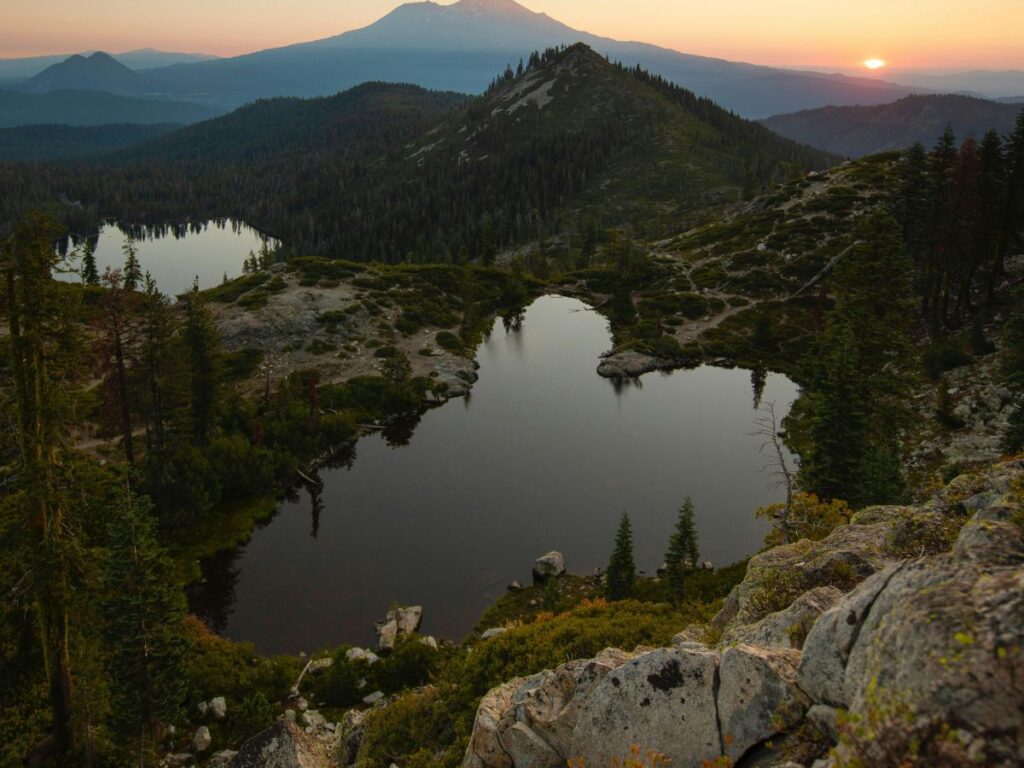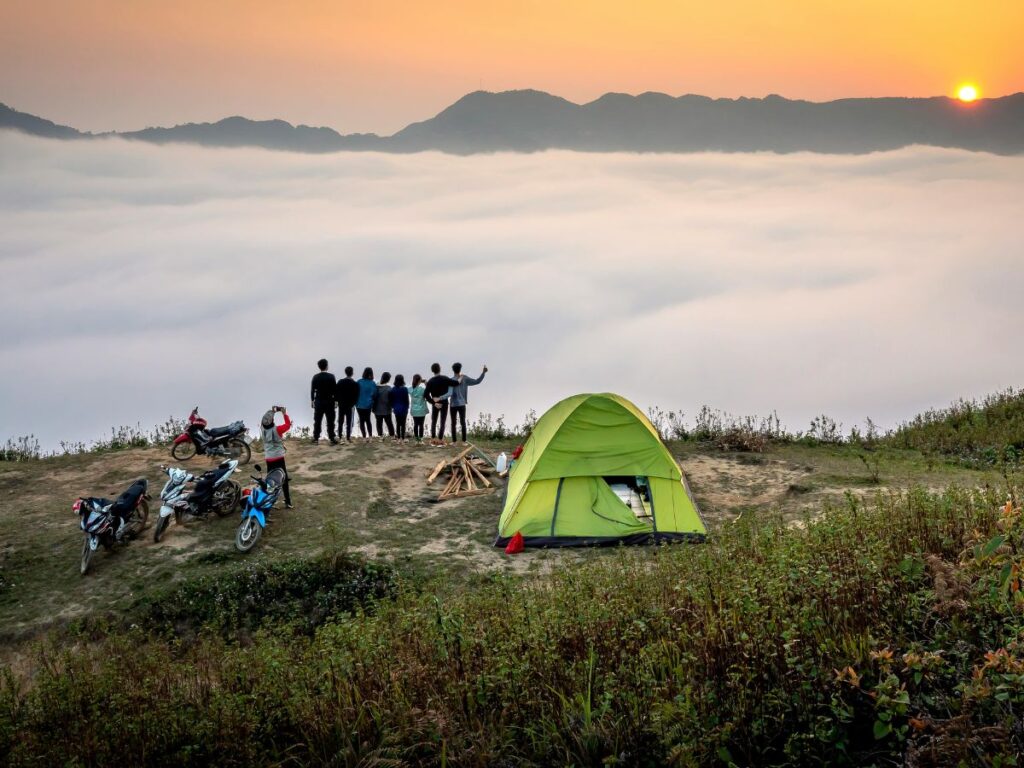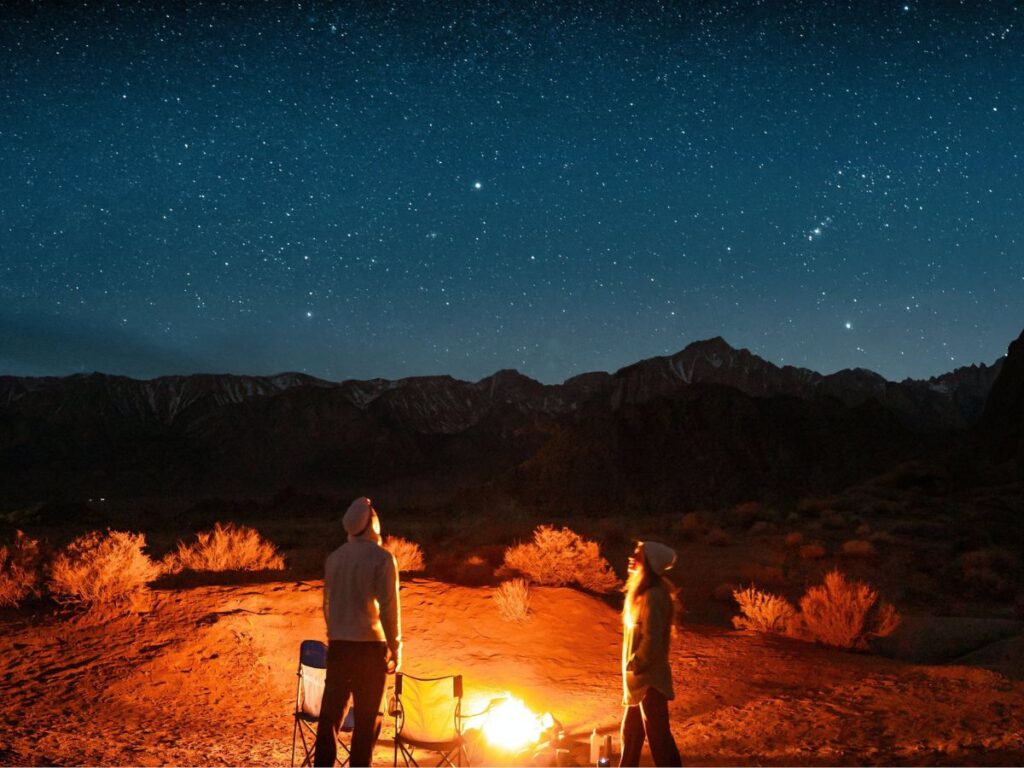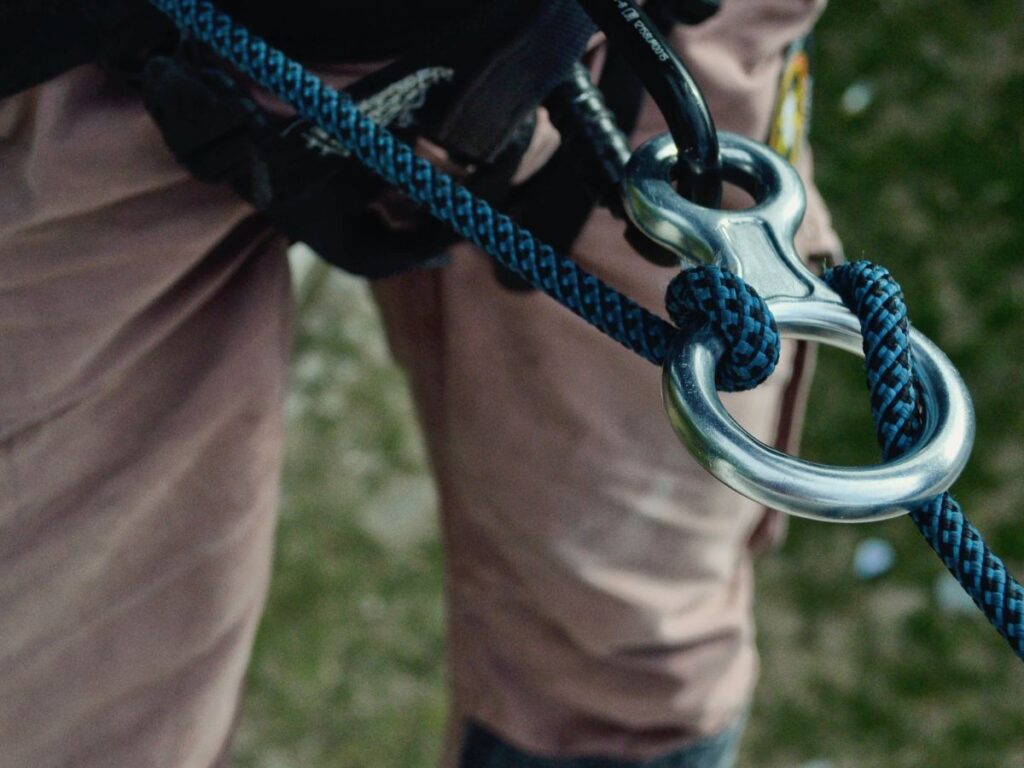Nestled within the breathtaking landscapes of Yosemite National Park lies a hidden gem awaiting discovery: Sunrise Lakes. Picture yourself waking up to the gentle hues of dawn dancing upon pristine alpine waters, surrounded by towering granite peaks. But Sunrise Lakes is more than just a scenic vista; it’s a gateway to adventure. From invigorating hikes along trails adorned with wildflowers to tranquil moments spent casting your line into crystal-clear waters, this destination offers something for every nature enthusiast. Join us as we unveil the secrets of Sunrise Lakes, guiding you through its trails, camping spots, and fishing havens, ensuring your trip is nothing short of unforgettable. Whether you’re a seasoned outdoor explorer or a first-time visitor, prepare to be captivated by the beauty and wonder of Sunrise Lakes in Yosemite.
Understanding Sunrise Lakes
Sunrise Lakes is a stunning natural attraction located in the heart of Yosemite National Park, renowned for its breathtaking beauty and serene environment. This trio of alpine lakes, nestled among the Sierra Nevada’s majestic peaks, offers a tranquil escape into nature. The area is celebrated not only for its picturesque landscapes but also for its significance within the broader ecosystem of Yosemite, serving as a pristine example of the park’s diverse natural features.
Natural Beauty: The Sunrise Lakes area is characterized by its crystal-clear waters, surrounded by lush meadows and towering granite cliffs. As the name suggests, the lakes are particularly famous for their spectacular sunrises, where the early light paints the waters and surrounding peaks in warm hues of gold and pink. The reflection of the sky on the lake’s surface creates a mesmerizing mirror effect, making it a favorite among photographers and nature enthusiasts alike.
Importance in Yosemite: Yosemite National Park, a UNESCO World Heritage site, is known for its impressive biodiversity, geological formations, and vast wilderness areas. Within this context, Sunrise Lakes plays a crucial role. It serves as a habitat for a variety of flora and fauna, contributing to the park’s biodiversity. The lakes are also a popular starting point or highlight for hikers exploring the Sunrise High Sierra Camp loop or making their way to other destinations within the park, such as Clouds Rest or Half Dome.
Geography, Terrain, Weather, Climate: Geographically, Sunrise Lakes is situated at an elevation that offers a unique perspective on the surrounding Sierra Nevada mountains. The terrain around the lakes varies, featuring rocky outcrops, dense forested areas, and open meadows, providing diverse hiking experiences. Trails leading to the lakes are well-maintained but can be challenging, offering elevation gains that require a moderate level of fitness.
The weather and climate in the Sunrise Lakes area are typical of the Sierra Nevada high country. Summers are generally mild and sunny, ideal for hiking and camping, while the transition seasons of spring and fall can be unpredictable, with sudden changes in weather conditions. Winters are cold, with heavy snowfall that often renders the trails inaccessible, thus preserving the area’s untouched beauty until the thaw.

Getting There
Accessing Sunrise Lakes, nestled within the expansive wilderness of Yosemite National Park, requires some planning. Whether you’re an experienced hiker or a first-time visitor eager to explore the natural beauty of the Sierra Nevada, understanding how to reach the Sunrise Lakes trailhead is essential. Below, find detailed directions to Sunrise Lakes from Yosemite Valley, alternative routes, and transportation options to ensure your journey to Sunrise Lakes is as smooth as possible.
Directions to Sunrise Lakes Trailhead from Yosemite Valley
Primary Route: The most direct way to reach the Sunrise Lakes trailhead from Yosemite Valley is by taking the Tioga Pass Road (Highway 120). This scenic route offers breathtaking views and leads you directly to the trailhead. Here’s how to navigate there:
- From Yosemite Valley, take the Tioga Road (Highway 120) eastward toward Tuolumne Meadows.
- Continue on Tioga Road for approximately 37 miles. The drive is picturesque, offering views of granite cliffs, alpine meadows, and dense forests.
- Look for the Sunrise Lakes Trailhead parking area on your right, just about a mile past the Tenaya Lake overlook and before you reach Tuolumne Meadows. The trailhead is well-marked, with a sign indicating the start of the trail to Sunrise Lakes.
Estimated Driving Time: The journey from Yosemite Valley to the Sunrise Lakes trailhead typically takes about 1.5 to 2 hours, depending on traffic and road conditions. It’s advisable to start early in the day to secure parking and enjoy the trail with fewer crowds.
Alternative Routes and Transportation Options
Alternative Routes: Visitors coming from other parts of Yosemite or the Eastern Sierra may choose to access the Sunrise Lakes trailhead via different routes. If you’re approaching from the east, the Tioga Pass Entrance (open seasonally) is your gateway into the park, leading you directly to Tioga Road and toward the trailhead.
Public Transportation: Yosemite National Park operates a seasonal shuttle service that offers transportation within the park, including to key trailheads. However, direct shuttle service to the Sunrise Lakes trailhead may be limited. Visitors are encouraged to check the latest shuttle schedules and routes on the National Park Service’s website or inquire at visitor centers for the most up-to-date information.
Private Shuttle Services and Tours: Private companies outside the park sometimes offer shuttle services and guided tours that include hikes in the Sunrise Lakes area. These options can provide a hassle-free way to explore the park, especially for those unfamiliar with the terrain or looking to learn more about the area’s natural history and ecology.
Important Considerations
Seasonal Road Closures: Tioga Road and other high-elevation routes in Yosemite are subject to seasonal closures due to snow. Typically, these roads close in late fall and reopen in late spring or early summer, but exact dates vary each year. Always check current road conditions with the National Park Service before your trip.
Parking: The parking area at the Sunrise Lakes trailhead can fill up quickly during peak tourist seasons. Arriving early in the day can help ensure you find a spot.
Permits: For those planning to backpack and camp overnight in the Sunrise Lakes area, wilderness permits are required and can be obtained from the Yosemite National Park website or visitor centers.

Hiking at Sunrise Lakes
Hiking to Sunrise Lakes in Yosemite National Park is an adventure that rewards with unparalleled natural beauty, serene alpine lakes, and breathtaking vistas of the Sierra Nevada. The trails to Sunrise Lakes are as enriching as the destination itself, offering a journey through diverse landscapes, from dense forests to granite cliffs and wildflower-strewn meadows. Here’s what you need to know about hiking in this pristine area of Yosemite.
Hiking Trails Leading to Sunrise Lakes
Main Trail: The primary route to Sunrise Lakes starts from the Sunrise Lakes Trailhead on Tioga Road, near Tenaya Lake. This trail is part of the larger Sunrise High Sierra Camp loop, a popular backpacking route in Yosemite. From the trailhead, the path ascends through a mixed conifer forest, offering occasional openings that provide early glimpses of the High Sierra’s rugged terrain.
Distance: The hike to the first of the Sunrise Lakes is approximately 3.5 miles one way, with an elevation gain of about 1,000 feet.
Continuing the Journey: Adventurous hikers can continue past the first lake to explore the second and third Sunrise Lakes, each uniquely beautiful and only a short distance apart.
Scenic Beauty Along the Trails: As you ascend towards Sunrise Lakes, the trail offers spectacular views of surrounding peaks and domes. The area’s high elevation means the air is crisp, and the sky is a deep shade of blue, creating vivid contrasts with the granite landscapes. Wildflowers bloom in abundance during the late spring and summer months, adding dashes of color to the green meadows. Keep an eye out for wildlife, including deer, marmots, and a variety of birds that call this area home.
Difficulty Level and Suitable Gear
Difficulty Level: The hike to Sunrise Lakes is considered moderate to challenging, primarily due to the elevation gain and the altitude at which the hike is situated. It’s a suitable hike for those with some hiking experience and a good level of physical fitness. The trail can be rocky and uneven in places, requiring careful foot placement.
Suitable Gear: Preparation is key to enjoying your hike to Sunrise Lakes. Here’s a list of recommended gear:
- Durable, supportive hiking boots or shoes with good grip.
- Layered clothing that can be adjusted for changing weather conditions. Even in summer, mornings can be cool, and weather can change quickly at high elevations.
- A map and compass or a GPS device. While the trail is well-marked, having navigational aids is wise.
- Bring plenty of water, especially in the summer months, and high-energy snacks or a packed lunch.
- Sunglasses, sunscreen, and a hat are essential to protect against the strong sun at high elevations.
- A basic first-aid kit, a whistle, and a flashlight or headlamp.
- Check the weather forecast and trail conditions before you go. Snow can linger on higher trails well into the summer.
- If planning an overnight trip, ensure you have the necessary wilderness permits and are familiar with Yosemite’s backcountry regulations.
Camping at Sunrise Lakes
Camping at Sunrise Lakes in Yosemite National Park is an unforgettable experience, offering a unique opportunity to immerse yourself in the tranquil beauty of the Sierra Nevada wilderness. The area around Sunrise Lakes provides idyllic settings for backcountry camping, with the serene alpine lakes and the stunning backdrop of towering granite peaks and lush meadows. Here’s what you need to know about camping in this pristine natural environment.
Sunrise Lakes Campground
While there isn’t a formal campground at Sunrise Lakes, backcountry camping is permitted in the vicinity of the lakes. This means campers can choose their own site in designated wilderness areas, adhering to park regulations designed to protect the environment and ensure the safety of all visitors. The area offers several spots that are ideal for setting up camp, especially near the three lakes, each offering its own unique views and surroundings.
Wilderness Permits: To camp at Sunrise Lakes, hikers need to obtain a wilderness permit from Yosemite National Park. These permits are required for all overnight stays in the backcountry and are designed to limit the impact on the natural environment.
Reservation Process: Wilderness permits can be reserved in advance through the National Park Service’s website. A portion of permits is available for reservation, while others are kept for walk-up visitors on a first-come, first-served basis at park wilderness centers.
Availability: Due to the popularity of Yosemite’s backcountry areas, it’s advisable to reserve your permit as early as possible. Reservations open months in advance and can fill up quickly, especially for popular hiking seasons from late spring through early fall.
Camping Regulations and Best Practices
To ensure a safe and enjoyable experience while minimizing environmental impact, campers at Sunrise Lakes should follow these regulations and best practices:
- Choose a campsite at least 100 feet away from water sources to protect water quality and minimize disturbance to wildlife.
- Use bear-proof containers to store all food and scented items. This is a requirement in Yosemite’s backcountry to protect both bears and campers.
- Pack out all trash and leftover food. Leave your campsite as you found it, or even cleaner, to preserve the wilderness experience for others.
- Campfires are generally prohibited in Yosemite’s high country, including the area around Sunrise Lakes, to prevent forest fires and reduce the impact on the environment. Use a portable stove for cooking.
- Where no toilets are available, bury human waste at least 6 inches deep and at least 100 feet away from water sources, trails, and camp areas.
- Keep your wilderness permit with you at all times and display it on your tent or backpack as required.

Dining Options
Exploring the natural wonders of Sunrise Lakes in Yosemite National Park often involves long days filled with hiking to Sunrise Lakes and adventure. Whether you’re embarking on a day hike or setting up camp for a few nights, knowing your dining options near the Sunrise Lakes trailhead, as well as suggestions for packing meals, is essential for a satisfying and energizing experience.
Dining Options Near Sunrise Lakes Trailhead
Nearby Facilities: Direct dining options in the immediate vicinity of the Sunrise Lakes trailhead are limited due to its wilderness setting. However, Yosemite National Park offers several dining venues within a reasonable distance, particularly in areas like Tuolumne Meadows and Yosemite Valley.
Tuolumne Meadows: The Tuolumne Meadows area, accessible via Tioga Road, provides a seasonal convenience store and grill offering basic groceries, snacks, and prepared food. This can be a convenient stop for grabbing last-minute supplies or enjoying a meal before or after your hike to Sunrise Lakes.
Yosemite Valley: For a wider variety of dining options, including sit-down restaurants, cafés, and fast-food outlets, Yosemite Valley is the place to go. While it requires a bit of a drive from the Sunrise Lakes trailhead, it’s worth considering if you’re passing through the valley at the beginning or end of your trip.
Suggestions for Packing Meals for Hiking and Camping
For Day Hikes: Packing lightweight, high-energy foods is crucial for day hikes to Sunrise Lakes. Consider these options:
- Snacks: Energy bars, trail mix, nuts, and dried fruit are great for on-the-go snacking and provide a quick energy boost.
- Lunch: Pack sandwiches or wraps made with hearty ingredients that won’t spoil easily. Peanut butter and jelly or cured meats like salami are excellent choices.
- Hydration: Carry plenty of water, and consider bringing a water filter or purification tablets if you plan to refill from natural sources. Electrolyte packets can also be helpful for staying hydrated.
For Overnight Camping: When camping at Sunrise Lakes, you’ll need to plan for meals that are both satisfying and practical.
- Breakfast: Instant oatmeal, granola with powdered milk, or breakfast bars are convenient and energizing starts to the day.
- Lunch and Snacks: Similar to day hikes, pack non-perishable snacks and lunch items. Add fresh fruits or vegetables for the first day if you can consume them early in your trip.
- Dinner: Freeze-dried meals are a popular choice for their light weight and ease of preparation — you only need to add boiling water. Alternatively, pack ingredients for simple, one-pot meals like pasta or rice dishes.
- Cooking Gear: Remember to bring a lightweight stove, fuel, and cooking utensils if you plan to prepare hot meals.
Fishing Opportunities
Fishing at Sunrise Lakes in Yosemite National Park presents an idyllic setting for anglers seeking the tranquility of alpine waters combined with the thrill of mountain lake fishing. Nestled within the vast wilderness of the Sierra Nevada, the clear, cold lakes offer a peaceful fishing experience with a scenic backdrop unmatched in its natural beauty. Here’s what you need to know to enjoy fishing in this pristine area.
Fishing at Sunrise Lakes
Sunrise Lakes are a series of three alpine lakes, each offering its unique charm and fishing opportunities. These high-elevation lakes are accessible via a hike from the Sunrise Lakes Trailhead, making the journey an integral part of the fishing experience. The serene environment, coupled with the relatively untouched nature of the lakes, provides a perfect setting for a day of fishing amidst the splendor of Yosemite’s wilderness.
Types of Fish and Regulations
Types of Fish: The Sunrise Lakes are known for their populations of trout, including Rainbow Trout and Brook Trout. These species thrive in the cold, clear waters of the Sierra Nevada, offering anglers the chance to catch fish in a stunning natural setting.
Fishing Regulations: Fishing regulations in Yosemite National Park are designed to protect the natural fish populations and the park’s ecosystems. Key regulations include:
- Season: Fishing season in Yosemite runs from the last Saturday in April through November 15th, aligning with California state fishing regulations.
- Limits: There are specific catch and size limits for trout in the park. For the most accurate and current regulations, refer to the California Department of Fish and Wildlife regulations and Yosemite National Park’s official guidelines.
- Catch and Release: In some areas, catch and release are encouraged or required, using barbless hooks to minimize harm to the fish.
Equipment and Licenses Required
Fishing License: Anyone 16 years of age or older must have a valid California fishing license to fish in Yosemite National Park. Licenses are not sold in the park, so you’ll need to obtain one ahead of your visit. They are available online through the California Department of Fish and Wildlife or at sporting goods stores throughout California.
Fishing Equipment:
- Rod and Reel: A lightweight rod and reel are suitable for the type of trout fishing found at Sunrise Lakes.
- Lures and Bait: Artificial lures and flies are generally recommended. Note that the use of natural baits may be restricted in some areas to protect native fish populations, so check current regulations.
- Other Gear: A small net, line cutter, and a tackle box with various lures and hooks. Polarized sunglasses can help reduce glare on the water and make it easier to spot fish.

Other Activities
While Sunrise Lakes in Yosemite National Park is renowned for its hiking trails and fishing opportunities, the area and its surroundings offer a plethora of activities for visitors looking to explore beyond these popular pastimes. From breathtaking scenic drives to educational programs, Yosemite provides a diverse array of experiences catering to all interests and ages. Here’s a look at some of the exploration opportunities and nearby attractions that enrich the Yosemite adventure.
Photography Workshops: Yosemite’s dramatic landscapes, from its towering granite cliffs to its serene alpine lakes, make it a haven for photographers. Various workshops and courses are offered within the park, catering to both amateur and experienced photographers wanting to capture the park’s majestic beauty.
Rock Climbing: The granite cliffs of Yosemite are legendary in the climbing world. For those new to climbing or looking to improve their skills, guided climbs and climbing schools are available. Iconic spots like El Capitan and Half Dome attract climbers from around the globe, but there are routes for all skill levels throughout the park.
Stargazing: The high elevation and clear skies make Yosemite an excellent place for stargazing. The park organizes night sky programs that allow visitors to gaze at the stars and learn about constellations, planets, and the cosmos.
Wildlife Watching: Yosemite is home to an abundance of wildlife, including black bears, deer, and numerous bird species. Safely observing these animals in their natural habitat can be a thrilling experience. The park offers wildlife viewing tips and guided tours to help visitors spot and understand the park’s fauna.
Nearby Attractions and Points of Interest
Tuolumne Meadows: A short drive from the Sunrise Lakes Trailhead, Tuolumne Meadows offers a stunning sub-alpine landscape peppered with wildflowers, clear streams, and granite domes. It’s a less crowded alternative to Yosemite Valley and offers numerous trails, rock climbing opportunities, and a chance to relax in a peaceful setting.
Mariposa Grove of Giant Sequoias: While a bit of a drive from Sunrise Lakes, Mariposa Grove is a must-visit for anyone coming to Yosemite. Home to over 500 mature giant sequoias, this grove provides a humbling experience as you walk among some of the largest living beings on Earth.
Yosemite Valley: Famous for its iconic landmarks such as Yosemite Falls, Half Dome, and El Capitan, Yosemite Valley offers not just spectacular views but also visitor centers, museums, and galleries that provide insights into the park’s history, geology, and cultural heritage.
Ansel Adams Gallery: Located in Yosemite Valley, this gallery showcases the work of the famous photographer Ansel Adams, along with works by other contemporary photographers and artists inspired by Yosemite’s beauty. It’s a source of inspiration for anyone interested in photography.
Sunrise Lakes to Clouds Rest
The hike from Sunrise Lakes to Clouds Rest is a journey through some of Yosemite National Park’s most breathtaking landscapes, culminating in one of the most spectacular panoramic views in the Sierra Nevada. This trail offers hikers the chance to experience the majesty of Yosemite’s high country, with its diverse terrains, expansive vistas, and the unique thrill of standing atop one of the park’s most famous summits.
Description of the Trail
Starting Point: The trail to Clouds Rest begins at the Sunrise Lakes trailhead, located along the Tioga Road near Tenaya Lake. After exploring the serene beauty of Sunrise Lakes, hikers can continue on the path leading towards Clouds Rest. The journey from Sunrise Lakes to the summit of Clouds Rest involves a steady climb through mixed conifer forests, open meadows, and granite outcroppings, showcasing the variety of Yosemite’s high country landscapes.
Distance and Elevation Gain: The hike from Sunrise Lakes to Clouds Rest is approximately 7 miles one way, with an elevation gain of about 1,000 feet from the lakes to the summit. The total elevation of Clouds Rest is 9,926 feet, making it one of the highest peaks in Yosemite National Park.
Scenic Viewpoints and Challenges
Scenic Viewpoints:
- Sunrise Lakes: Before embarking on the climb to Clouds Rest, the tranquil beauty of Sunrise Lakes offers a peaceful start to the hike.
- The Ascent: As the trail ascends, hikers are treated to stunning views of the surrounding Sierra Nevada, including distant peaks, lush valleys, and the vast wilderness of Yosemite.
- Clouds Rest Summit: The summit of Clouds Rest provides a 360-degree panoramic view that is unmatched, offering vistas of Yosemite Valley, Half Dome, the High Sierra, and beyond. On clear days, the view extends for miles in every direction, making the challenging hike well worth the effort.
Challenges:
- Narrow Ridge: The final approach to Clouds Rest involves traversing a narrow ridge with steep drop-offs on either side. While the path is wide enough for safe passage, it can be intimidating for those with a fear of heights.
- Altitude: The high elevation of Clouds Rest means that hikers should be prepared for thinner air, which can make the physical effort more challenging. Acclimatization to the altitude, hydration, and pacing are key to successfully completing the hike.
- Weather: Weather conditions in the high country can change rapidly. Hikers should be prepared for sudden changes in weather, including thunderstorms, especially in the late spring and summer months.

Key Takeaways
- Sunrise Lakes in Yosemite National Park offers a stunning natural retreat, known for its crystal-clear alpine lakes, serene beauty, and the opportunity to witness spectacular sunrises amidst the Sierra Nevada’s rugged terrain.
- Access to Sunrise Lakes is primarily through the Sunrise Lakes Trailhead on Tioga Road, with options for both personal vehicle access and limited public transportation, requiring careful planning to secure wilderness permits for overnight stays.
- Hiking at Sunrise Lakes ranges from moderate to challenging, providing breathtaking views, diverse terrains, and the unique experience of high-altitude wilderness exploration suitable for prepared and fit hikers.
- Camping near Sunrise Lakes allows for an immersive experience in the wilderness, demanding strict adherence to Leave No Trace principles, bear safety, and the use of bear-proof food storage methods to protect both the environment and wildlife.
- Dining options in the vicinity are limited, emphasizing the importance of packing sufficient, high-energy food and water for hiking and camping, with the nearest dining facilities located in Tuolumne Meadows and Yosemite Valley.
- Fishing opportunities at Sunrise Lakes invite anglers to enjoy the tranquility of high-country fishing, subject to Yosemite’s fishing regulations and the necessity of a California fishing license for those over 16.
- Additional activities such as photography workshops, rock climbing, stargazing, and wildlife watching enrich the visit, while hikes to other attractions like Clouds Rest offer further adventure, showcasing the unparalleled panoramic views of Yosemite National Park.
FAQs
- What is the best time of year to visit Sunrise Lakes in Yosemite?
The best time to visit is from late June to early September, when the snow has melted, and the trails are accessible. - Do I need a permit to hike to Sunrise Lakes?
No permit is required for day hikes, but overnight stays in the backcountry require a wilderness permit. - How difficult is the hike to Sunrise Lakes?
The hike is considered moderate to challenging due to elevation gain and altitude. - Can I fish at Sunrise Lakes, and what type of fish can I catch?
Yes, fishing is allowed. You can catch Rainbow and Brook Trout, following Yosemite’s fishing regulations. - How do I get a wilderness permit for camping at Sunrise Lakes?
Wilderness permits can be reserved online through the Yosemite National Park website or obtained in person on a first-come, first-served basis. - What wildlife might I see around Sunrise Lakes?
Common wildlife includes deer, marmots, black bears, and various bird species. - Do I need a fishing license to fish at Sunrise Lakes?
Yes, anyone 16 years of age or older must have a valid California fishing license. - Can I make a campfire while camping near Sunrise Lakes?
Campfires are generally prohibited in Yosemite’s high country, including near Sunrise Lakes. Portable stoves are recommended for cooking. - What is the distance from Sunrise Lakes to Clouds Rest?
The distance is approximately 7 miles one way from the lakes to the summit of Clouds Rest. - Are there any dining facilities near Sunrise Lakes?
No direct dining facilities are available at Sunrise Lakes; the nearest options are in Tuolumne Meadows and Yosemite Valley.
